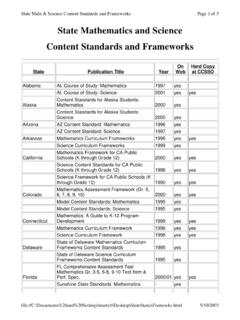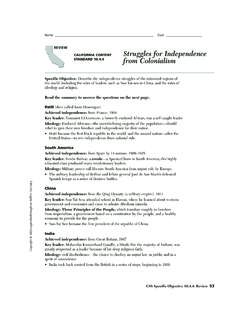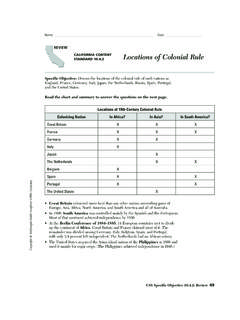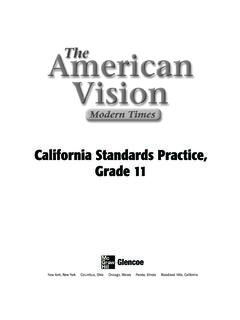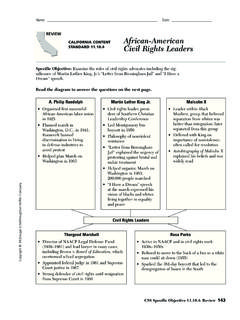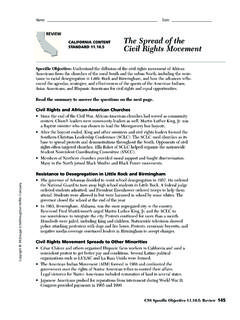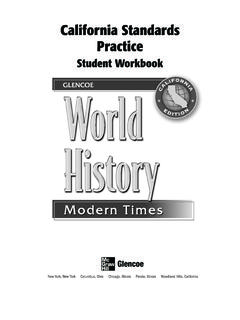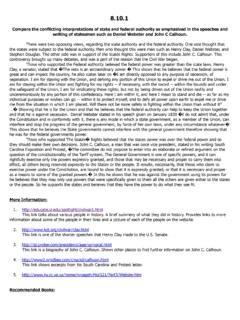Transcription of CALIFORNIA CONTENT Inventions and STANDARD 10.3.2 …
1 Name_____ Date_____ CALIFORNIA CONTENT STANDARD Inventions and Social Change Specific Objective: Examine how scientific and technological changes and new forms of energy brought about massive social, economic, and cultural change. Machinery made the Industrial Revolution possible. Reliance on machinery defined the revolution from its earliest days, and technological innovation drove its development. Here are some of the best-known innovations. Technological Innovations of the Industrial Revolution Inventor I n v e n t i o n Significance James Watt Improved steam engine (1769) Provided an efficient source of industrial p o w e r Eli Whitney Cotton gin (1793) Sped cotton production by separating fiber from seed Henry Bessemer Bessemer process (1850s) Quickly and cheaply made steel out of iron Louis Pasteur Pasteurization (sterilization) of liquids (1860s) Increased the shelf life of milk and other products Thomas Edison Improved electric light (1879) Made possible long-lasting indoor electric light Spread of Technology __ By the 1840s, England had become a nation connected by railroads.
2 Around the same time, the United States, Russia, and European nations, such as France and Germany, developed rail systems too. Railroads transported goods and linked commercial centers. __ Major advances in communications had occurred by the 1870s. International mail service had been achieved; telegraph messages could be transmitted around the world in minutes; and, in 1876, the telephone was used for the first time (though it did not become widespread until the early 1900s). Effects on Society __ In agricultural life, the forces of weather and nature rule. In the new industrial culture, work could take place in any weather and more quickly than ever before. __ Railroads replaced horses, increasing loads and decreasing shipping and travel times. With the telegraph, it now took minutes rather than months for a message to reach a faraway destination.
3 The pace of life had changed forever.

